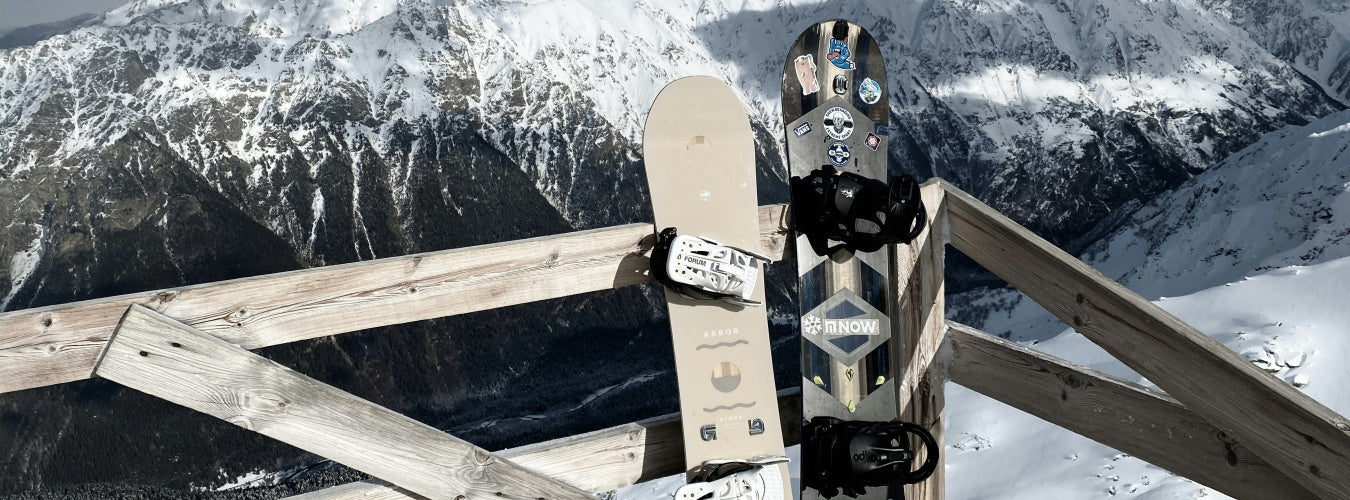Available for purchase in the USA
US

Choosing the right size of snowboard is essential to having a successful and enjoyable experience on the slopes. Whether you’re a beginner or an experienced rider, the right size can significantly impact your control, stability, and overall performance. In this article, we’ll guide you through the factors that influence the size of board, how to determine the best fit for your riding style, and how to test your board in the off-season to ensure it’s the perfect match.
When you’re choosing a snowboard, two of the most important factors to consider are your height and weight. These factors help determine the overall length of the board, and choosing the right size will ensure better stability and maneuverability.

Size of board is typically based on your height and weight. Taller and heavier riders will usually need a longer board, while shorter and lighter riders will benefit from a shorter one. Generally, the board length should come up to somewhere between your chin and nose when you stand it up vertically.
A rough guideline is:
However, these are just basic guidelines, and you may need to adjust based on your personal preferences and riding style.
Different snowboarding styles—such as freestyle, freeride, and all-mountain—require different board sizes. Your choice of size will depend heavily on your preferred terrain and type of riding.
Understanding how different snowboarding styles affect your board size is key to making the right choice. Let's dive into how board size aligns with each style:

Freestyle riders typically prefer shorter boards. These boards are easier to spin, turn, and perform tricks. A smaller board allows for better maneuverability, helping riders hit jumps and rails with ease. The ideal length for freestyle riders usually falls within the range of 140-155 cm.

Freeride boards tend to be longer, offering greater stability at high speeds and in powder conditions. These boards perform well in deep snow and off-piste terrain, providing smooth turns and the stability needed for rough conditions.

All-mountain boards are designed to be versatile, and their size is a balance between freestyle and freeride boards. These boards are great for riders who want to explore different terrain types, from groomed trails to powder and everything in between.
Choosing the right snowboard width is just as important as selecting the correct length. A board that is too narrow or too wide can affect your performance and comfort.

If your boots hang over the edge of the board, it could lead to toe or heel drag, causing instability and reducing your control. It’s essential to select a snowboard with the correct width to avoid this issue.
Testing your board size is essential to making sure it will be comfortable and perform well in various conditions. While choosing a snowboard based on height and weight is a good start, it’s also important to test how the board feels in action.
Snowboard size can feel different on snow compared to standing still with your board. The best way to test the feel of your board is by actually riding on it, but since that’s not always possible in the off-season, there are ways to simulate snowboarding at home.
The Snowboard Training Mat is an excellent way to test your board size before hitting the slopes. During the off-season, you can simulate snowboarding movements and test the fit and feel of your board. The mat’s surface mimics the snow, allowing you to practice essential skills like spins, grabs, and buttering—all from the comfort of your home.
The Matace Snowboard Training Mat is designed to provide a realistic surface that simulates snow, which is perfect for practicing board control and refining your technique. By using this mat, you can determine if the board size is the right match for your riding style, movements, and comfort level before heading out to the mountain.
To make choosing a snowboard's size even easier, here’s a simplified size chart:
|
Rider Height |
Rider Weight |
Recommended Board Length |
|
5’0”–5’4” |
90–140 lbs |
130–145 cm |
|
5’4”–5’8” |
130–170 lbs |
145–155 cm |
|
5’8”–6’0” |
160–200 lbs |
155–165 cm |
|
6’0” and above |
190+ lbs |
165+ cm |
Choosing the right size can be a bit overwhelming, but with the right information, you can make an informed decision. Remember to consider your height, weight, and riding style when selecting your board. It’s also essential to test the board to ensure it feels comfortable and responds well to your movements.
The Matace Snowboard Training Mat is a fantastic tool to help you fine-tune your snowboard's size and technique, especially during the off-season. By using the mat, you can practice essential skills and test how your board responds to your movements in a realistic setting, giving you the confidence to hit the slopes with the perfect size.
In conclusion, selecting the right snowboard size is key to improving your performance, ensuring safety, and having fun on the slopes. By understanding your riding style, using a size chart, and testing your board using tools like the Matace Snowboard Training Mat, you’ll be ready for an exciting snowboarding season ahead. Don’t forget that practicing during the off-season can give you an edge when the snow finally falls.
Leave a comment